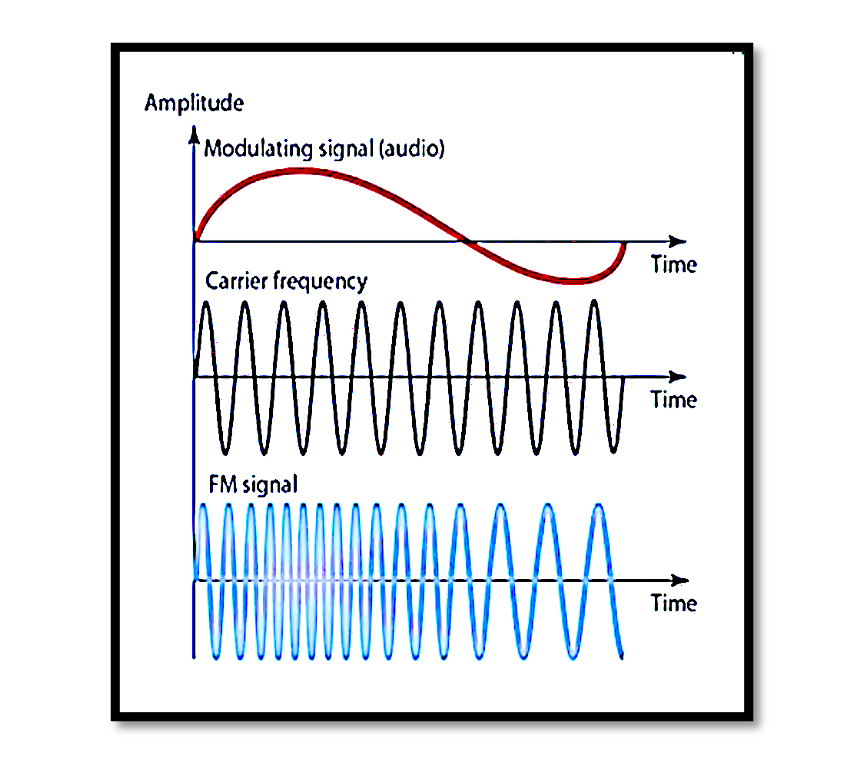
Understanding Frequency Modulation (FM) and its Spectrum
Frequency Modulation (FM) is one of the most commonly used modulation techniques in communication systems, particularly in radio broadcasting, telecommunications, and other wireless systems. This blog will break down the principles, mathematical formulation, and spectrum of FM signals, referencing the provided slides to aid comprehension.
What is Frequency Modulation?
Frequency Modulation (FM) is a technique where the frequency of a carrier signal is varied in accordance with the instantaneous amplitude of a modulating signal (the message). Unlike Amplitude Modulation (AM), the amplitude of the carrier remains constant, while its frequency varies dynamically based on the input signal.
The FM wave can be defined mathematically as:

The frequency deviation of the carrier is proportional to the amplitude of the modulating signal, making FM signals robust against amplitude noise.

FM Modulation Circuit
The practical implementation of FM often uses a voltage-controlled oscillator (VCO). The VCO generates a carrier signal whose frequency is varied by the amplitude of the input signal xm(t).
Circuit Components:
- Oscillator Tank Circuit: Comprising an inductor and variable capacitor, it generates a carrier frequency.
- Voltage-Controlled Capacitance (C): The capacitance is varied as a function of the modulating signal, resulting in frequency modulation.
- Voltage V3: Represents the modulating signal.
The modulation process dynamically changes the tank circuit’s resonance frequency:


Frequency Spectrum of FM Signals
One of the significant advantages of FM is its bandwidth efficiency and noise resilience, although it occupies a larger spectrum than AM.
Spectrum Characteristics:
- Carrier Frequency: The central frequency of the spectrum.
- Sidebands: FM generates an infinite number of sidebands due to the Bessel function, with significant energy concentrated within a limited bandwidth.
Carson’s Rule: The approximate bandwidth of an FM signal is given by:

FM spectra are much more spread out than AM but provide improved fidelity and noise immunity.
Comparison of FM and AM
A key distinction between FM and AM lies in how the information is encoded:
- AM (Amplitude Modulation): The carrier amplitude varies based on the input signal.
- FM (Frequency Modulation): The carrier frequency varies based on the input signal.
This distinction makes FM more immune to amplitude-based noise but at the cost of increased bandwidth.
Applications of FM
- Radio Broadcasting: FM is widely used in commercial radio due to its superior sound quality and noise resilience.
- Two-way Radios: Applications in aviation, military communication, and handheld radios.
- Television Sound: FM is used to transmit audio signals in TV broadcasts.
Take our entry level course (Below) for free using coupon code RAHRF101BLOG
RF Fundamentals, Basic Concepts and Components – RAHRF101
For limited time take an additional 10% off of all our courses using coupon code RFCERT10
Rahsoft RF Certificate and courses
Conclusion
Frequency Modulation is an essential technique in modern communication systems, offering high fidelity and noise immunity. Understanding its spectrum and implementation is crucial for designing efficient and robust wireless systems.
By exploring the mathematical foundations, implementation circuits, and spectrum, we can appreciate the nuances of FM. From its core principles to practical applications, FM remains a cornerstone of modern communication technology.

Learn more about this topic by taking the complete course ‘Introduction to Modulation in Communication Systems Online Course – RAHRF152’. Watch the course videos for more detailed understanding. Also checkout other courses on RF system and IC design on https://rahsoft.com/courses/. Rahsoft also provides a certificate on Radio Frequency. All the courses offer step by step approach.



